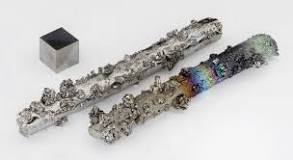Rhenium
Rhenium, element 75 on the periodic table, belongs to the cluster of elements known as the transition group of elements. It was the last of the natural elements to be discovered, some 50 years after the introduction of the periodic table. It is a silvery white, rare, heavy, polyvalent transition metal.
Rhenium is used as an additive to tungsten- and molybdenum-based alloys to give useful properties. These alloys are used for oven filaments and x-ray machines. It is also used as an electrical contact material as it resists wear and withstands arc corrosion.

